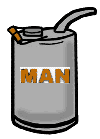|
Past Preventive Maintenance columns: Machining
Center PM—Index and NC Tables Examining
Accuracies on Machining Centers Zero
Points on Machining Centers—Machining Centers vs.
Lathes Completing
Lathe Maintenance—Tailstock, Sub-Spindle, and
Zero-Point Alignment A
Closer Look at Spindles and Turrets The
Next Level: Accuracy—Checking Backlash on Lathes
Inspecting
the Electrical Cabinet Everyone's
Favorite Task—Cleaning Coolant—The
Most Ignored Fluid in your Machines It's
Summertime—Is your Chiller Working? The
Other Oils—Inspecting the Main Hydraulic Systems
|
MIKE BREEN ON PREVENTIVE MAINTENANCE |
|
Frequently Asked by Michael W. Breen |
|
|
Although it is difficult to respond to all of them, some questions I see are on topics that would be of interest to others. This month’s column is dedicated to responding to and sharing some of the questions you have asked. What is the best maintenance record-keeping software? I am a little out of touch with the latest and greatest (I have been removed from the internal maintenance scene for over five years), but when I was searching for maintenance software, I discovered there were many different programs on the market. In my opinion, most of them were ridiculously expensive and cumbersome. We ended up manipulating inventory software and using manually generated service requests. My only advice is to fully evaluate your current needs and find a program that fits them; do not drastically change your system to fit new software. These programs can turn a working supervisor into a data entry person very quickly. If it does not make your life easier, do not use it. What alternatives are there for repairing backlash? There are most certainly some control options that “mask” backlash, but unfortunately the only way to truly handle the problem is to repair the feed system. Just because you have backlash in an axis, does not make your machine “junk”. If cash flow is the problem, and you do not have time for the full repair, make sure the bearings are pre-loaded properly and check the stretch of the ballscrew. I am sure there are other alternatives available; but remember that backlash is mechanical “slop,” and the only true way to repair it is to remove the “slop”. Where can I find out more about coolant test strips? The coolant articles by far generated the most feedback, which tells me there is not a lot of information available. I was able to track down bug and bacteria checkers, but most of them took at least 24 hours to receive results. I need your help. The test strip I am trying to find is just for testing concentration and provides immediate results. Coolant testing is a daily PM task, and anything other than immediate results will not apply. E-mail me with any information you have, and I will include it in my next column. What is twist and what causes it? We have not addressed machine leveling yet, but twist is a reference to what the machine bed is doing. For example, your machining table is 40" by 20" and the table may dip in the middle or have one corner that sits 0.001" higher. This is considered twist. Most casting twist is a result of the floor or support the machine is sitting on. Think about it. Twenty-five thousand pounds of machine sitting on 6" to 8" of concrete; the floor will bend or settle and the machine goes with it. Leaving a leveling bolt not touching the floor will do it. I will spend a couple of articles explaining the art of leveling and how to check for twist. This is a difficult one to answer without consuming the entire space of the article. Where do I get training for machine repair when my employer won’t send me to school? It does seem a bit counterproductive for companies not to invest in formal training for their maintenance personnel, but sometimes cost supersedes the need. I can only suggest you keep trying and take a lot of notes. There are many local college degree programs that focus on machine repair. A single course is not too expensive, and I suggest first taking a basic electricity course or even a digital or PLC class. If you can find a way to learn the basics, you will form a greater base of experience on which to build. When I started in this field, I found that experience was just as important as formal training. Hang in there! The longer you keep trying, the better you will become. That is all the room we have for this month. If you have comments, questions, topic ideas or success stories, let me know. I cannot always get back to everybody, but I try. In June, we will get back into the PMs. Talk to you next month. Mike Breen’s career of more than 14 years in machine tool repair includes his experience as an aircraft electrician in the U.S. Army’s 101st Airborne. He is a Certified Electronic engineer, presently working as a Field Service Engineer with Ellison Machinery Company of Wisconsin. Mike invites you to share your own machine repair and maintenance experiences with him. For comments and inquiries about these articles, his e-mail address is mbreen@ellisonwi.com. - May 2001 |

 I have received many e-mails on a wide variety of preventive maintenance subjects.
I have received many e-mails on a wide variety of preventive maintenance subjects.